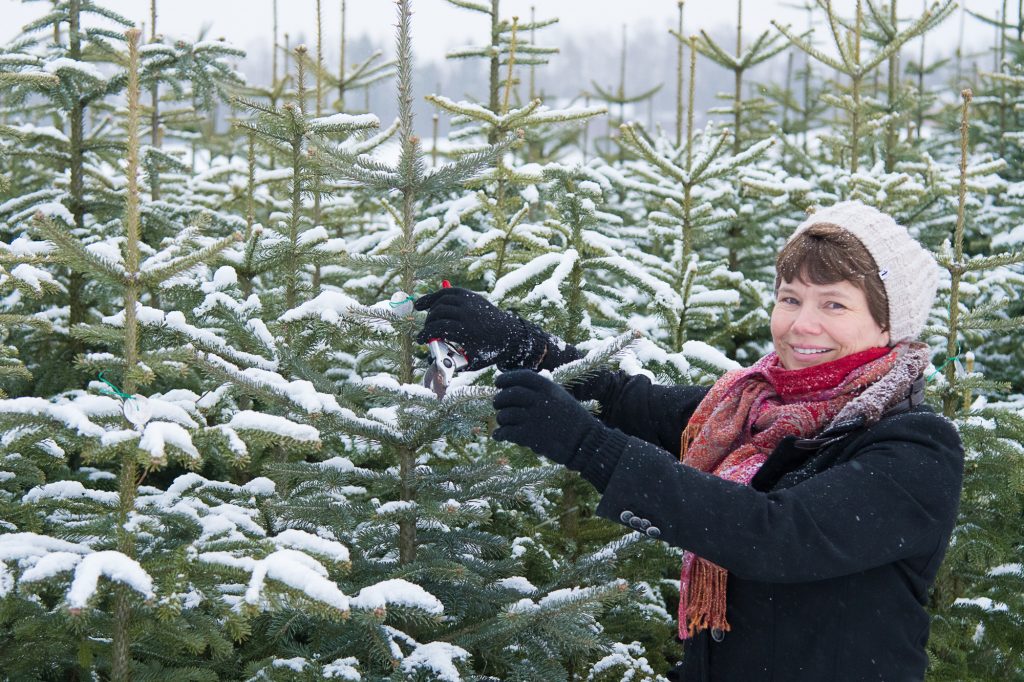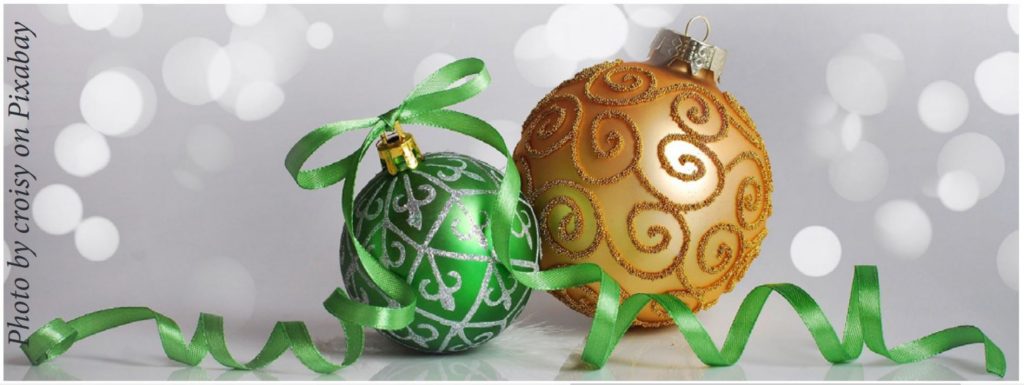The Science under the Christmas Tree
An Interview with IUFRO’s Christmas Trees Working Party Coordinators
https://www.iufro.org/science/divisions/division-2/20000/20200/20209/
Christmas trees have become a universal holiday season symbol. During the last 20 to 30 years, as the worldwide consumption of real Christmas trees has risen to exceed 80 million annually, the science and technology behind plantation Christmas tree production have also developed rapidly, particularly in Europe and North America.

IUFRO has a Working Party that provides a forum for the exchange of scientific research results among researchers, students, extension agents and extension specialists who work professionally with the Christmas tree industry.
The IUFRO Christmas Trees Working Party is currently coordinated by Dr. Bert Cregg of Michigan State University, USA, Dr. Chloe Gendre (currently on leave) of Club agroenvironnemental de l’Estrie, Canada, and Dr. Inger Sundheim Fløistad of the Norwegian Institute of Bioeconomy Research (NIBIO).
Q: Dr. Sundheim Fløistad and Dr. Cregg, do you usually have a real Christmas tree in your home and if so, how do you choose it?
Inger Sundheim Fløistad: Yes, we always have a real Christmas tree in our home. When our two sons were younger we usually visited a local choose-and-cut farm, and our boys selected and cut the tree. Now, we buy from a local grower selling Christmas trees close to where we live.
Bert Cregg: Yes, we have a real tree every year. I planted a block of 100 Fraser fir or Abies fraseri seedlings about 12 years ago. We gave most trees away to friends over the past few years, but we kept a few that we still harvest for our own Christmas tree.
Q: With the Christmas Season drawing near, what is the latest trend in Christmas trees and how can science help to respond to such trends.
Bert Cregg: Improving grower efficiency and environmental sustainability are two key trends. We are working to help growers reduce their inputs, especially nitrogen fertilization. This reduces their input costs but also reduces the potential for nutrients to run-off into surface water or leach to groundwater.
Q: Many people are looking for the perfect Christmas tree in terms of size and symmetry. Can genetic selection or breeding cater for these needs?
Bert Cregg: Yes, depending on the species, tree improvement efforts are underway at various levels i.e., species selection, provenance testing, progeny trials, for a range of traits including growth, tree form, and needle color. Some traits that are especially important for Christmas trees include date of budbreak – trees that break bud early are often subject to frost damage – and post-harvest needle retention. If a tree has good form and color but drops its needles all over the floor, the customer is going to be unhappy.
Q: The buzzword of our time is “sustainability”. Are Christmas trees a sustainable product? Are the trees grown sustainably?
Inger Sundheim Fløistad: Locally produced Christmas trees are more sustainable than artificial plastic trees. All professional growers are to follow national regulations to ensure the real Christmas trees to be sustainable. After use, Christmas trees are also easily recyclable.

Inger Sundheim Fløistad harvesting samples in late November. Photo provided by I. S. Fløistad 
Bert Cregg visits an organic Christmas tree plantation in Austria. Photo provided by B. Cregg
Q: How healthy are Christmas trees? Is there a need to treat them with lots of pesticides and herbicides?
Inger Sundheim Fløistad: For the Christmas tree growers, it is important to choose species and provenances adapted to the local conditions. Healthy trees are important for the growers. In Norway the growers have to follow regulations and the principle of integrated pest management aiming to reduce pesticide use and be clever in management strategies to reduce the risk.
Bert Cregg: In the U.S. we are also promoting integrated pest management (IPM). One of the key elements of IPM is scouting and only spraying pesticides when absolutely needed. In the past, growers often relied on broad spectrum insecticides; this killed the pest but also killed beneficial insects, and growers found themselves on a ‘treadmill’ of repeated spraying due to lack of natural control. Increasingly, they are realizing the best choice is often not to spray.
Q: One of the issues that consumers have with Christmas trees is their shedding of needles. What does research do to improve needle retention after harvesting?
Inger Sundheim Fløistad: After harvesting it is most important that the costumers treat the Christmas tree optimally. In Norway, lots of people still use Norway spruce for Christmas, even if the species shed needle faster compared to Abies sp. We have therefore studied post-harvest needle retention in several seed sources of this species.
Q: How do you share your knowledge with Christmas tree growers? How long does it take until latest innovations are implemented on the ground?
Inger Sundheim Fløistad: We cooperate closely with the national Christmas tree growers association when developing research projects. In that way we try to ensure the research topic to be relevant. We also participate in meetings and field excursions for professional growers to ensure transfer of knowledge and innovations.
Bert Cregg: In the U.S., most Christmas tree researchers are at universities that are part of the Land-grant system, which means part of our assignment is extension and technology transfer. This is often done in collaboration with state Christmas tree associations. We use a variety of means of share research results including articles in grower magazines, meetings, field days, and increasingly on-line through webinars and videos. All the researchers in the U.S. conduct at least some of their research in on-farm trials with cooperating growers. This helps in terms of resources – it’s hard for researchers to manage hectares of plantations -, but also ensures that the research is relevant and promotes rapid adaption.
Q: What is in your view the biggest knowledge gap in Christmas tree research?
Bert Cregg: A major issue for many U.S. producers is precocious coning in Fraser fir. This is the premium species for several of the main growing regions in the US. However, the trees produce dozens, sometimes hundreds, of cones that the growers must remove by hand. We have been conducting trials to understand the biology of coning in order to develop strategies to reduce coning, such as applying plant growth regulators. We are also exploring genetic selection for reduced or delayed coning.
Q: What is the general outlook for 2020 and beyond? Will the COVID-19 pandemic affect the Christmas tree industry?
Bert Cregg: U.S. producers have started a self-funded promotion campaign to increase demand for real trees and the outlook is strong. COVID-19 presents challenges and opportunities. Growers have to be diligent to keep their employees and customers safe and healthy. Fortunately, most activities on a Christmas tree farm are outdoors and trees are usually grown on a 2m x 2m spacing, so they are perfect for social distancing! With travel restrictions in place, many people are focusing on home and holiday traditions, including real Christmas trees.
Thank you for this interview! Happy Holidays!


Leave a Reply